2024 Yamaha WR450F Review
With Aiden Gale
Twenty-five years after Yamaha’s landmark release of the WR400F, a pioneer in bush-legal off-road four-stroke performance that Aussies fell in love with, the 2024 WR450F takes centre-stage as the eighth generation of a platform that has been a huge success for Yamaha.
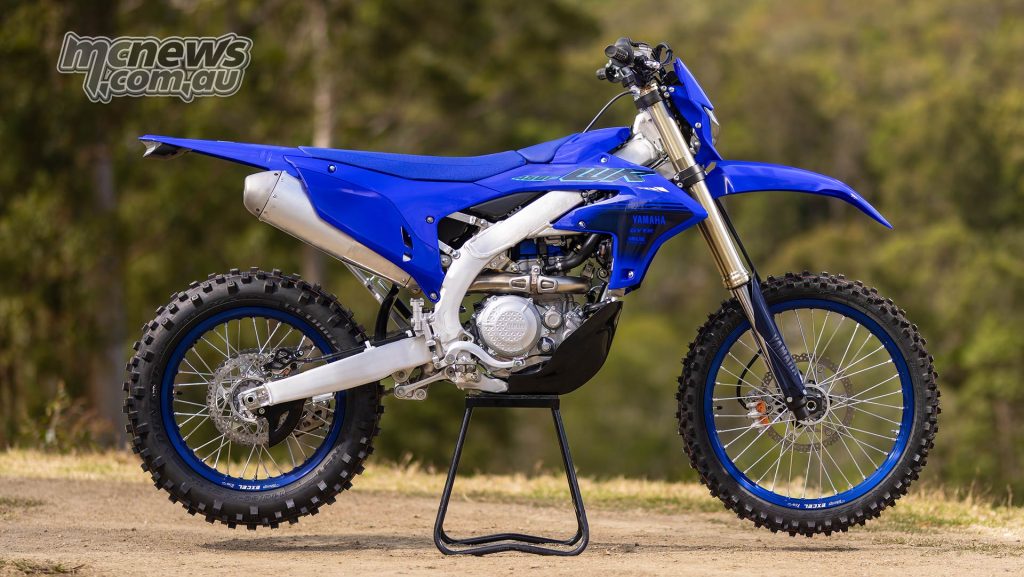
The WR450F is converted for ADR use here in Australia. Buyers also score a free off-road kit for closed course competition with their bike, which includes:
- LED tail light/and licence plate holder
- Braided steel front brake line
- Full power/full movement throttle stopper screw
- Brake snake rear foot brake protector cable
- Off road brake light switch wire harness
- Barkbuster handguard set
- Original front and rear brake line Banjo bolts
- Original tail light undercover
- Original engine stop switch, engine start switch
- Communication Control Unit
- CCU map switch
- 5 x 100mm zip ties for speedo sensor line attachment to brake line

Recently I got to take the new WR450F for a spin, already fitted out with its competition kit and rolling on Dunlop Geomax Enduro EN91 tyres. I lowered the pressures in those down to 10psi in the front and 9psi in the rear, an act that earned me some friendly teasing later on.
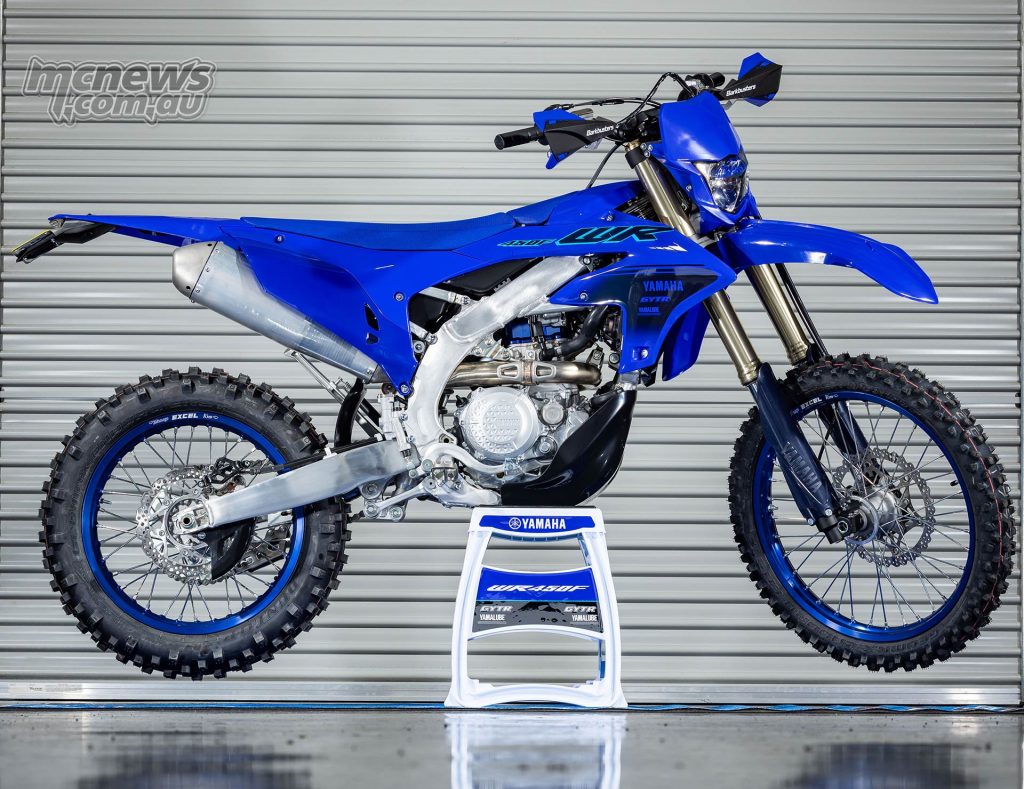
Our testing-grounds at retired pro-racer Josh Green’s estate provided an optimal backdrop for pushing the limits of Yamaha’s latest offering.

In recent years, most of my seat-time has been on European machines so I was eager to see how the WR450F matched up.
When jumping on a new bike, likes and dislikes are always most prominent in the first 20 minutes, and after that, you just tend to start adapting to the bike. My first few laps triggered the following observations…

The bike was fairly firm and was bouncing over, rather than soaking up, the bumps. I pulled to the side of track, and softened the KYB forks up a little with the new tool-less compression adjusters at the top of the fork. A great and convenient feature that begs the question, why is there not tool-less adjustment on all areas of the suspension?
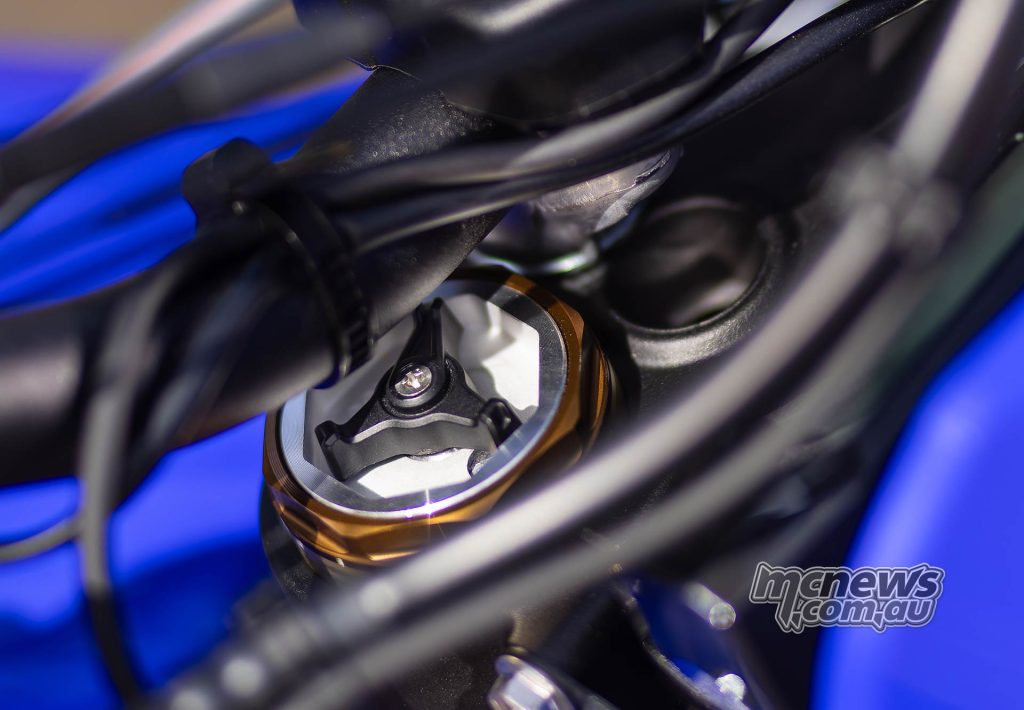
Zipping through a few tight trails, I had to add a second finger to assist with pulling in the clutch, as it felt as if the clutch was heavier than the hydraulic clutches I’m used to. Upon closer inspection, I noticed the bike was assembled with the lever bracket hard against the side of the grip. A slight adjustment to position the lever so my fingers were using the most outer section of lever to pull the cable, provided me with way better mechanical advantage, and a much lighter pull of the clutch.
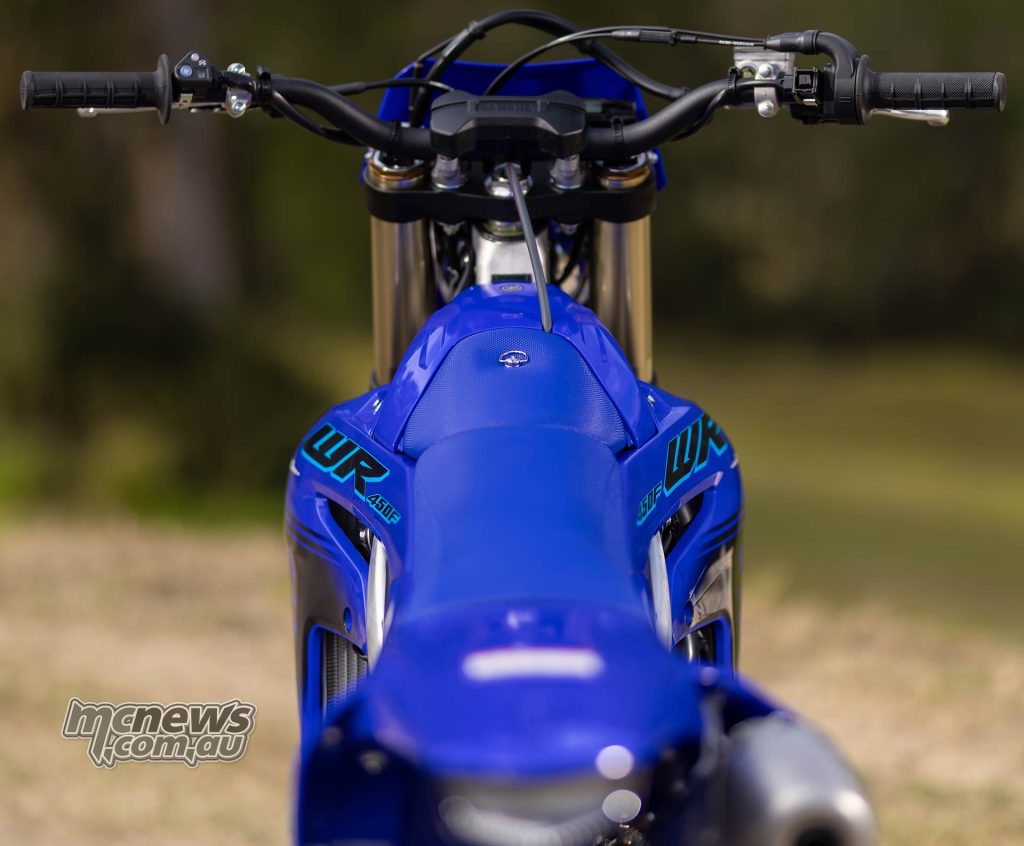
For me, there were no noticeable differences between cable vs hydraulic in progression, and I think it comes down to personal preference. We’ve all had a cable fray and I have also had issues with clutch slave cylinders, so mechanically, I really don’t see an advantage either way.

I remember the old model WRs were quite wide up front, and that has certainly been addressed on the new WR450. The 2024 design feels very slim, from the seat right through to the shrouds, which gives the bike a more playful feeling.
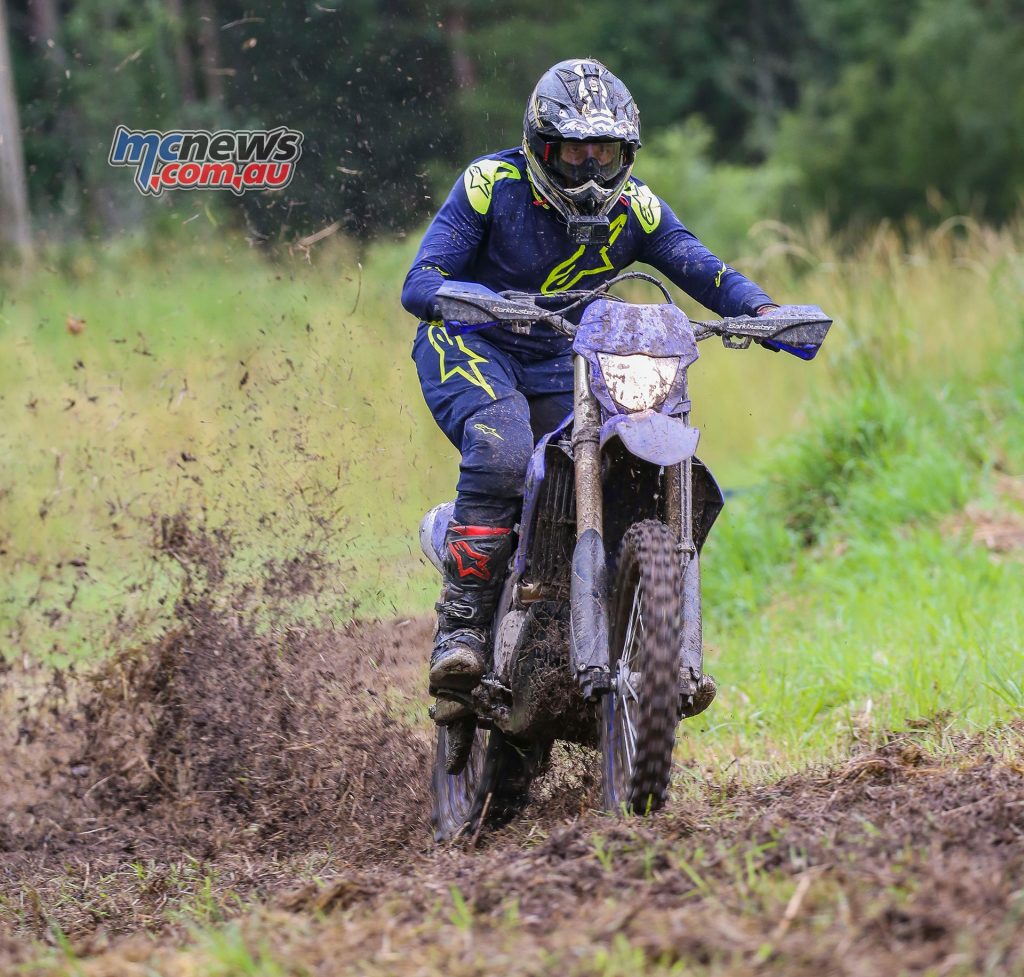
There is no doubt the original WR heralded a new era in off-road riding, for both hard-core enthusiasts and weekend warriors, and with each new generation of the machine Yamaha has striven for less weight, better handling, tractability and reliability.
I can confidently say the bike is a force to be reckoned with.
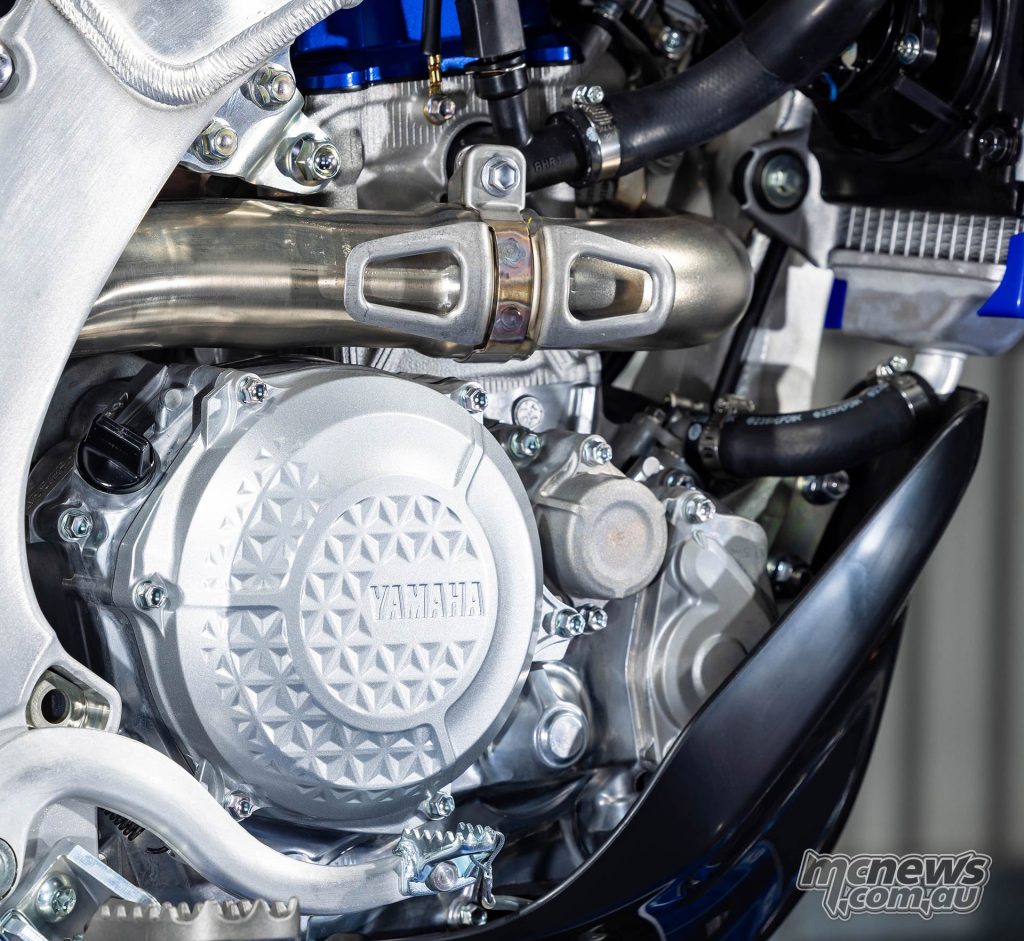
The new WR450F has inherited a whole lot of swag from the latest generation YZ450F motocross machine.
Overall the bike is two-kilograms lighter than its predecessor, tipping the scales at 117 kg with the new and more compact 7.4-litre fuel tank full. After some calculations using the trip meter vs fuel consumption meter, I established an 80-90km fuel range from the 7.4-litre tank.

Many engine components in the YZ450F-derived engine are lighter including the intake ports, piston, cylinder body, crank assembly, cam chain, con-rod bearings, and lubrication system, which results in an engine that’s 1.1 kg lighter than its predecessor.
To help translate that motocross power into a more tractable enduro guise, a different ECU promises better traction from low speeds, before building towards full power at medium to high rpm, to help effectively repurpose the YZ450F engine for enduro duty. The wide ratio five-speed gearbox replaces the MX cogs, and now features wider main-shaft gears for reduced weight and increased strength, with ratios specifically developed for enduro racing.
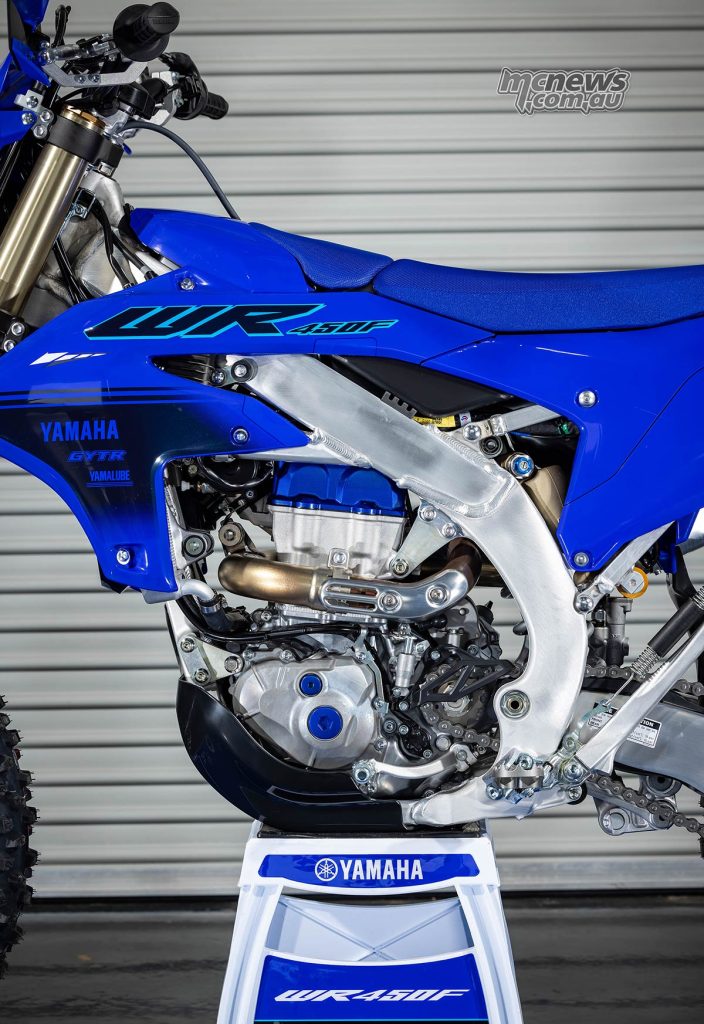
A new Controlled Fill aluminium bilateral beam frame is lower and sports WR450F specific engine mounts for bush work.
Despite the challenging conditions brought on by heavy rainfall, the WR450F showcased its versatility and adaptability. With the KYB now dialed in, and the really punchy mid-top-end begging to be stretched out like a latex glove, I really started to gel with the machine.
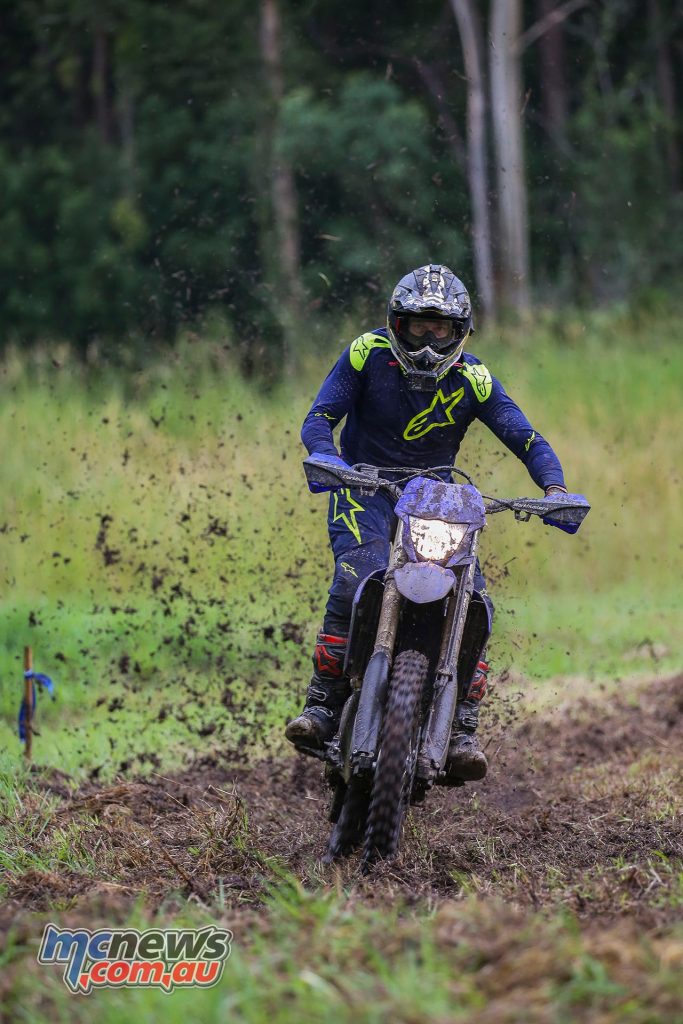
Settling into a good flow, I was amazed at how nimble and easy it was to point and shoot the WR exactly where you wanted to go. With absolutely no chance of keeping up with the Team Yamaha boys out front, the racer in me wouldn’t give up hope…and, well, you know what they say.: “Two motorcycles travelling in the same direction, IS A RACE!”.
The boggy motocross circuit allowed me to delve into the intricacies of the Yamaha Power Tuner App. With a few tweaks to the ignition map via the app, with the aim of tailoring it specifically to the wet and slippery terrain, I was pleasantly surprised by the bike’s enhanced traction and control, and how wide the adjustment field was.
At one point AJ and I dialed the power back to its minimum (as a test), making the bike feel like a 250. I run dirtbike tours and having a WR450 that could be tamed back to 250 level to suit a beginner rider on a tour really makes it a versatile application.
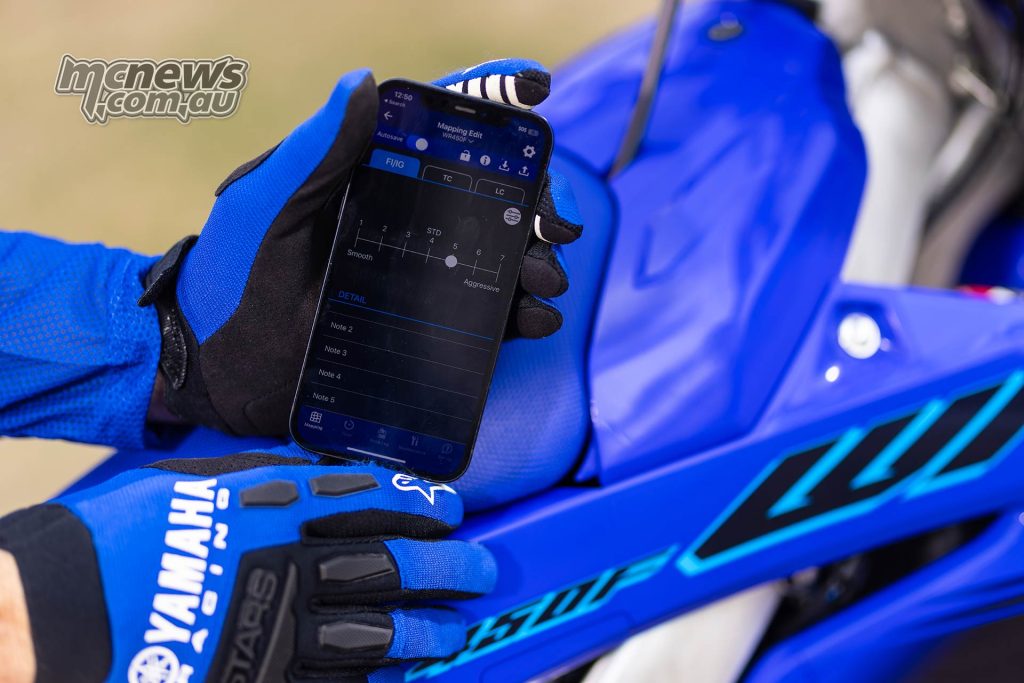
The WR450F has a multi-function map switch, conveniently positioned on the left handlebar. This intuitive switch, complete with a bright blue indicator light, allows riders to seamlessly toggle between different power maps on the fly, providing instant adaptability in varying riding conditions.
With its robust performance and adaptability, the WR450F begs the question: Can it transition seamlessly into a long-range adventure or desert explorer?
The answer is yes. Yamaha’s GYTR aftermarket options, coupled with an IMS larger fuel tank, provide ample opportunities for customisation. While the standard racing seat offers firm support, riders embarking on extended adventures may find upgrades like Seat Concepts seats beneficial. And of course you can turn down the engine response for prolonged rides.
The test day really opened my eyes to the capabilities of the WR450 and had me wondering if you will see these machines hired out on Victorian high country tours in the future.
On a humorous note, during the testing we were about to tackle a long, rocky section, Josh stopped the group and said, “Take it easy up here, there are some big rocks in this section, and we don’t want any punctures!”
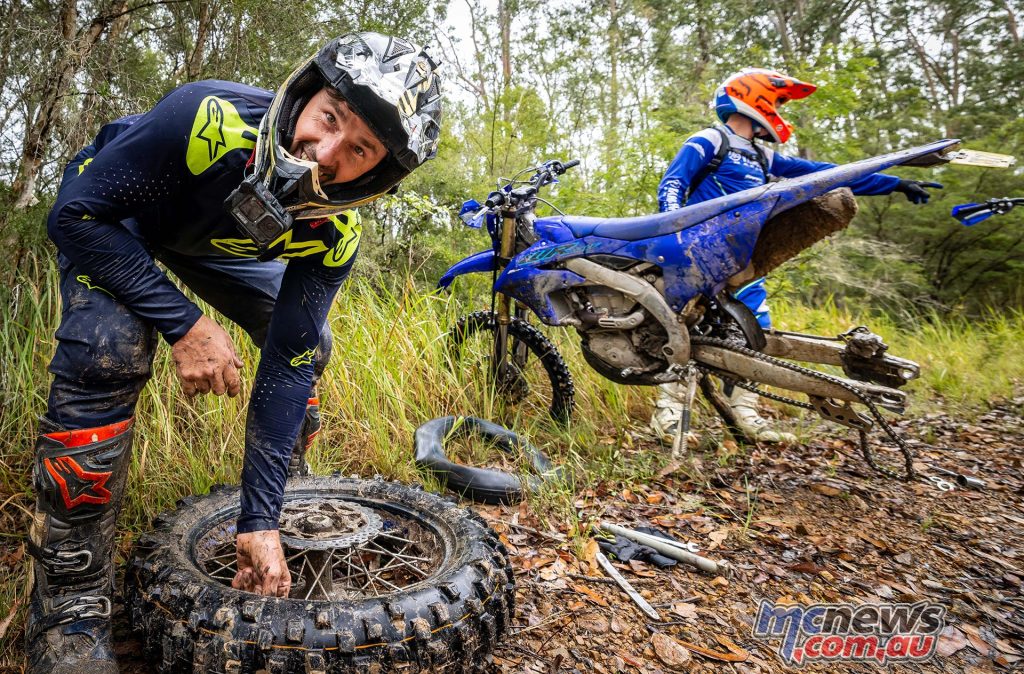
I guess you don’t have to be a rocket scientist to work out how I ended up with the nickname “Old 9 PSI.”
In comparison to its Austrian and French competitors, the WR450F holds its own in terms of performance and pricing. While its warranty coverage reflects its race-ready pedigree, with the standard three-month parts-only warranty, the WR450F’s price tag of $17,999 Inc GST makes it a compelling choice for riders seeking top-tier off-road performance.
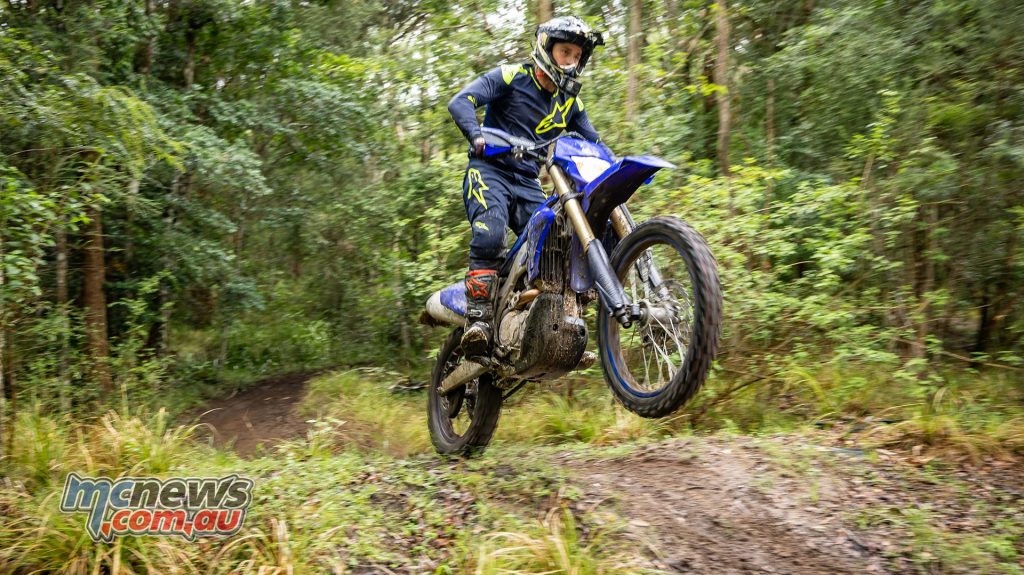
2024 Yamaha WR450F Specifications
- Engine type Liquid-cooled, 4-stroke, DOHC, 4-valve
- Cylinder arrangement Single, reverse fed
- Displacement 450 cm3
- Bore × stroke 97.0 x 60.8mm
- Compression ratio 13.0:1
- Starting system type Electric starter
- Lubrication system Dry sump
- Engine oil capacity 1.2 L
- Fuel tank capacity 7.4 L
- Fuel delivery Fuel injection
- Ignition system type TCI (Transistor Controlled Ignition)
- Primary reduction ratio 2.481 (27/67)
- Secondary reduction ratio 3.846 (13/50)
- Clutch type Wet, multiple-disc
- Transmission type/Shift type Constant mesh, 5-speed
- Gear ratio (1st–5th) 1st: 2.500 (12/30), 2nd: 1.800 (15/27), 3rd: 1.350 (20/27), 4th: 1.100 (20/22), 5th: 0.880 (25/22)
- Frame type Control Fill aluminium bilateral beam type
- Caster angle 27°
- Trail 121 mm
- Suspension (front) KYB coil spring, fully adjustable, twin chamber, speed sensitive damping with 300mm travel
- Suspension (rear) KYB fully adjustable linkage type with 306mm travel
- Brakes (front/rear) 270mm/240mm single hydraulic discs
- Tyres (front/rear) 90/90-21 Dunlop Geomax EN91F front and 140/80-18 Dunlop Geomax EN91 rear
- Length 2170 mm
- Overall width 825 mm
- Overall height 1265 mm
- Seat height 955 mm
- Wheelbase 1470 mm
- Minimum ground clearance 330 mm
- Wet weight (all fluids & full tank of fuel) 117 kg
- Multifunction display meter LCD display with dual tripmeters, digital speedometer, clock, timer, fuel and engine lights
- Warranty Three months, parts only
- Colour Team Yamaha Blue























